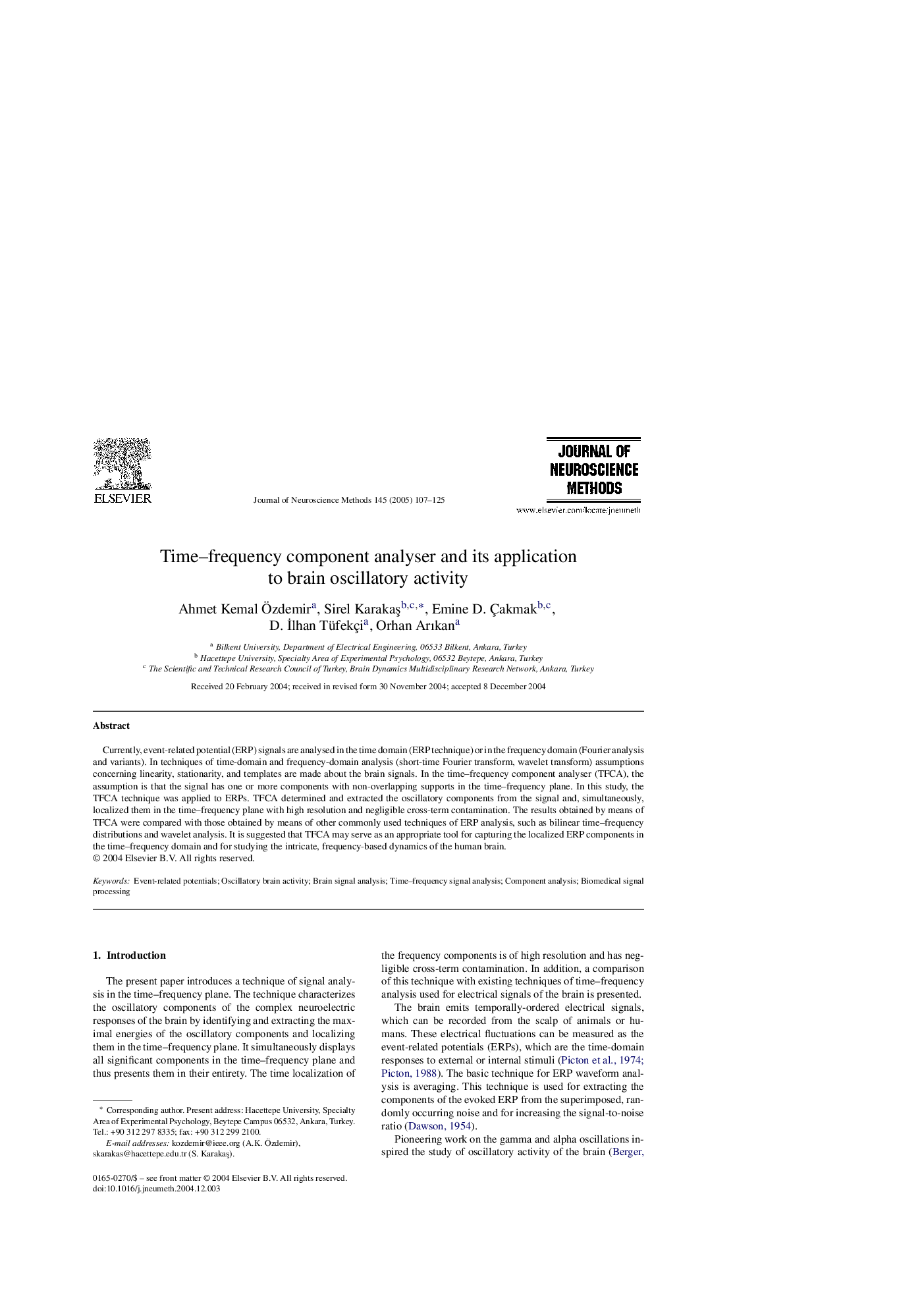| Article ID | Journal | Published Year | Pages | File Type |
|---|---|---|---|---|
| 9424202 | Journal of Neuroscience Methods | 2005 | 19 Pages |
Abstract
Currently, event-related potential (ERP) signals are analysed in the time domain (ERP technique) or in the frequency domain (Fourier analysis and variants). In techniques of time-domain and frequency-domain analysis (short-time Fourier transform, wavelet transform) assumptions concerning linearity, stationarity, and templates are made about the brain signals. In the time-frequency component analyser (TFCA), the assumption is that the signal has one or more components with non-overlapping supports in the time-frequency plane. In this study, the TFCA technique was applied to ERPs. TFCA determined and extracted the oscillatory components from the signal and, simultaneously, localized them in the time-frequency plane with high resolution and negligible cross-term contamination. The results obtained by means of TFCA were compared with those obtained by means of other commonly used techniques of ERP analysis, such as bilinear time-frequency distributions and wavelet analysis. It is suggested that TFCA may serve as an appropriate tool for capturing the localized ERP components in the time-frequency domain and for studying the intricate, frequency-based dynamics of the human brain.
Keywords
Related Topics
Life Sciences
Neuroscience
Neuroscience (General)
Authors
Ahmet Kemal Ãzdemir, Sirel KarakaÅ, Emine D. Ãakmak, D. Ä°lhan Tüfekçi, Orhan Arıkan,
